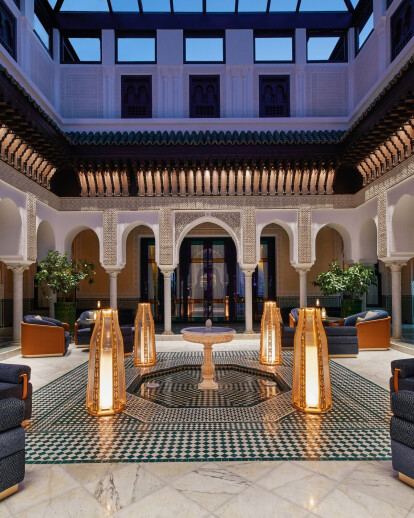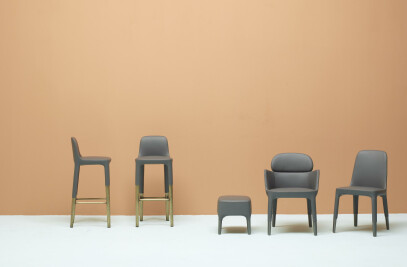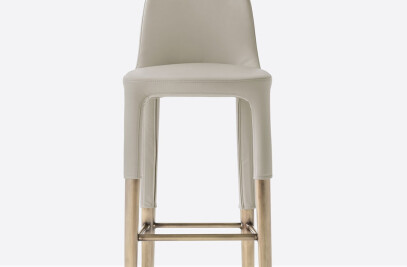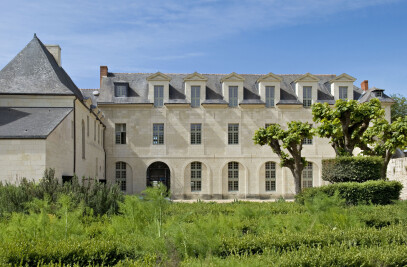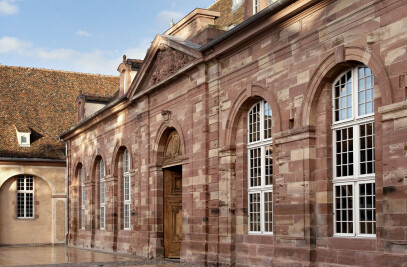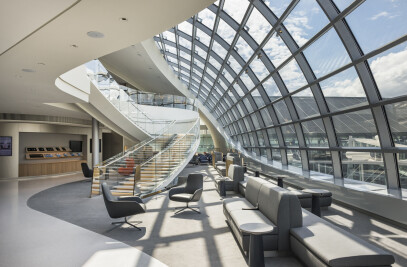The first time we visited La Mamounia, we had that strange and comforting sensation of time slowing down, of life becoming simpler. Keeping hold of that feeling, we walked around the different spaces, breathing in their potential. Our approach is simple. We put absolute trust in our intuitions, which were registering a slight imbalance of energies between the grandiose promenade – the Allée Majorelle – with its Italian bar and restaurant, and the other social venues such as the Churchill Bar and the Le Français restaurant. Strolling around and happening upon chance encounters with unusual and magical places became our scenario for this new story. “Everything must change so that everything can stay the same,” wrote Giuseppe Tomasi di Lampedusa in The Leopard. Like a director who opens his film with a long tracking shot, where the camera plunges forwards into the view that leads towards the garden, we had the feeling of being a spectator, that everything is in place, as if it had been there forever; because it is this reassuring sensation of time standing still that calls us to peace. And yet on closer inspection, the lights have been redesigned to add a touch of warmth and modernity; in order to remain forever suspended in a present without end, La Mamounia has to reinvent itself perpetually
Staying at La Mamounia should be a succession of unique experiences, with the different restaurants being themain players in promoting this adventure. Each of them has its own character, all are complementary. We openedup the walls of the former Italian restaurant and transformed it into L’Asiatique by Jean-Georges Vongerichten, asensual and intimate space. The original traditional Moroccan decor merges perfectly with the spirit of the chef’scuisine. It is the furniture that makes the transition between the two worlds, with a mixture of Chinese, Japaneseand Thai influences. We gave great importance to the lighting, and Stéphane Carratero came to weave his magicso that as night falls, L’Asiatique becomes a restaurant for lovers.\
Nearby, the former restaurant Le Français becomes “L’Italien”, also under the management of Jean-GeorgesVongerichten. It has been enlarged, taking on the form of a winter garden. The relationship between therestaurant and the garden is absolute. The large glazed windows that enclose it open generously onto thevegetation to let in light and cool air. Sanjit and I adore Italy. We spend a lot of time there, for work as well asfor pleasure, so it was a joy to associate that great Italian combination of refinement and simplicity with the spiritof La Mamounia. The cooking takes place in front of your very eyes, which is a captivating spectacle, it is theessence of life. We placed the kitchen at the centre of the space, beneath a huge glass installation. A verdantfrieze running more than 20 metres along the back wall seems to mirror the garden, adding to a sensation ofbeing somewhere between real and unreal, the past and future. Whether for a family, couple or group of friends,“L’Italien” is a first choice for a sophisticated and relaxed occasion.
La Mamounia’s swimming pool is a must. It sits perfectly within the garden, with a little island that appears to floatin the middle adding an air of charming fantasy. A day spent next to the pool or in the garden is an extra gift thatLa Mamounia offers its guests. You just want to stay forever.The pool pavilion is the land of plenty; we wanted to make it a celebration of generosity and pleasure. In themiddle sits a blue ceramic fountain, around which gravitates a curving bar offering a range of temptations, eachmore appetising than the next, all beneath a vast circular chandelier made out of fabric and brass. For the bar weused one of our favourite materials, enamelled lava stone. It is indestructible and the little crackled effect coveringit gives the charm of passing time. A door opens into a new space, which Sanjit calls “the temple of sugar”.In the middle of this space sits a block of peach-coloured marble with a surface of polished, hammered copper,which displays the inventions of the world’s greatest pastry chef, Pierre Hermé.
After rethinking the restaurants, we turned our mind to surprises for the guests. You will have to stroll aroundto discover them. The first is on the way to the spa and occupies two spaces. It is Pierre Hermé’s salon dethé, designed around the principles of Moroccan tearooms with their banquettes facing one another along thewalls. They are orientated towards the centre of the first space, where we have installed a fountain that seemsto erupt from the marble floor. The water reflects a huge glass chandelier. It is the focal point of the salon andclearly visible from the lobby. Designing our projects, we call these types of installation “les objets extraordinaires”,extraordinary objects. Their purpose is to amaze, to catch the onlooker’s eye, to mesmerise them and incite themto come closer. As the tearoom is not on a main route through La Mamounia, we needed to create a sufficientlypowerful architectural feature to bring life to this space; this is the primary function of the luminous sculpture.
The experience continues in the adjoining courtyard, the Moroccan riad in all its splendour. We love this place, soquiet, so perfect in its geometry. We just added some seating and lanterns to make guests want to pause herequietly and taste one of Pierre Hermé’s creations, taking time for pleasure.
In the evening, a door opens into the Churchill Bar. The bar has always been here and is a landmark for regularguests. We gave it a complete redesign to make it ultra-intimate, a sanctum in smoked oak, in the middleof which is a block of sculpted black marble. Not forgetting La Mamounia’s past relationship with railways,the proportions of this space echo those of a Pullman carriage. The Churchill is also the entrance into a newprovision: the cinema. We really indulged ourselves in conceiving the dream experience, mixing culture andcomfort. We can’t wait for another viewing of The Man Who Knew Too Much, which Hitchcock filmed right here.
We now turn to the enoteca and the tents. These are new arrivals to La Mamounia and a big surprise for theguests. The tents form a transition zone between the swimming pool and L’Italien. Slightly raised to sit back frompassage, comfortably installed and protected from the sun, guests can spend a special moment here. You cantake lunch, or just read a book. Victor Hugo’s poem La Sieste, perhaps?One of these tents takes the visitor to the Enoteca. You descend down into the ground to a trove where thetreasures discovered by the sommeliers of La Mamounia have been stored. A beautiful table in stone andlava stone sits beneath a large opening in the roof, from which light is diffused through a chandelier of cords,illuminating the liquids to reveal their secrets. This work is typical of the exceptional skill of the Moroccancrafts men, which we have carried through into the 21st century. The fundamental ambition of this project is thatLa Mamounia should be the living example of the continued reinvention of a culture.
